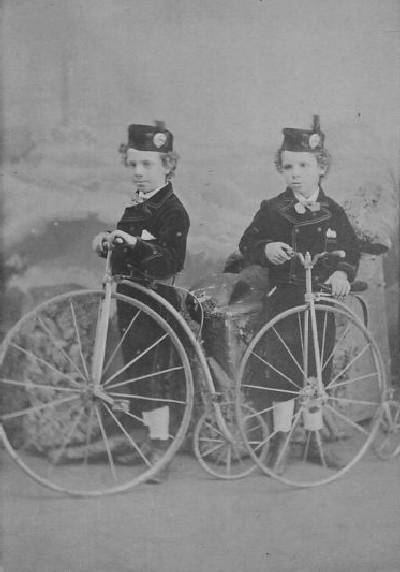
English Boys' Headwear: Glengaries

Figure 1.--Glengaries are normally seen as a Scottish cap style. They were often worn with kilts, but not always. We note portraits of English boys as well wearing glengaries. We are not sure how common this was. We have a feeling it was more of an upper-class style and not very common.Most of the portraits we have noted ae from the 19th century. They may have been worn by boys with Scottish family connections. More likely may have been that the Queen Victoria and the Royal fanily had made Scottish styles popular. This CDV was taken in Manchester, we think in the 1870s.
|
|
Glengaries are normally seen as a Scottish cap style. Because of the association with Scotland, they were often worn with kilts. This was, however, not always the case, even in Scotland. Kilts were not all that common in Englnd. So we see more boys wearing Glengaries with other outfits than kilts. We note portraits of English boys wearing glengaries with many different outfits. We are not sure how common this was, but we have found quite afew examples in the photographic record. We have a feeling it was a style popular with middle-class families in comfortable circumtances. We do not see working-class boys commonly wearing them. Glengaries were done with many small stylish variations. We see all-black Glenagrries as well as some wih colored decorations. Checkerboard side trim was popular. Thy were commonly worn wih decorative rosette cockades. Most of the portraits with boys wearing Glengarries are from the 19th century. They may have been worn by boys with Scottish family connections. More likely may have been that the Queen Victoria and the Royal fanily had made Scottish styles popular. Unfortunately we have very few English photographs from the 1840s and 50s. We do begin ro see Glengarries in the English photographic record in the 1860s. We are not sure just when the portrait here was taken, but the 1870s seems likely (figure 1). We do note English boy, John Montagu Slopford wearing a Glengarry in London during 1871.
Accopanying Outfits
Glengaries are normally seen as a Scottish cap style. Because of the association with Scotland, they were often worn with kilts. This was, however, not always the case, even in Scotland. Kilts were not all that common in Englnd. So we see more boys wearing Glengaries with other outfits than kilts. We note portraits of English boys wearing glengaries with many different outfits.
Prevalence
We are not sure how common this was, but we have found quite afew examples in the photographic record. We have a feeling it was a style popular with middle-class families in comfortable circumtances. We do not see working-class boys commonly wearing them.
Styling
Glengaries were done with many small stylish variations.
Decoration
We see all-black Glengarries as well as some wih colored decorations. Checkerboard side trim was popular. Thy were commonly worn wih decorative rosette cockades.
Most of the portraits we have found with boys wearing Glengarries are from the 19th century. They may have been worn by boys with Scottish family connections. Much more important was Queen Victoria and the Royal fanily popularuzing all things Scottish. The Royal family had a huge impact on fashion. They made Scottish styles popular in England as well as other coubtries. Kilts and other cottish styles were not worn outside Scotland until Queen Victoria began dressing the princs in kilts. Unfortunately we have very few English photographs from the 1840s and 50s. Photography was not as common in England as in America. We do begin ro see Glengarries in the English photographic record in the 1860s with the advebt of the CDV and thesudden appearance of large numbers of photographic portrait. . We are not sure just when the portrait here was taken, but the 1870s seems likely (figure 1). We do note English boy, John Montagu Slopford wearing a Glengarry in London during 1871.
We see some images of English boys wearing Glengaries in the 20th century, but after the turn of the 20th cenury, this becomes much less common and almost always with boys wearing kilt outfits.
HBC

Navigate the Boys' Historical Clothing Web Site:
[Return to Main English headwear style page]
[Return to Main English headwear page]
[Return to Main Glengarry country pages]
[Introduction]
[Activities]
[Biographies]
[Chronology]
[Clothing styles]
[Countries]
[Photography]
[Topics]
[Bibliographies]
[Contributions]
[FAQs]
[Glossaries]
[Images]
[Links]
[Registration]
[Tools]
[Boys' Clothing Home]
Created: 3:37 AM 6/26/2007
Last updated: 8:47 AM 5/9/2015



